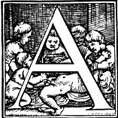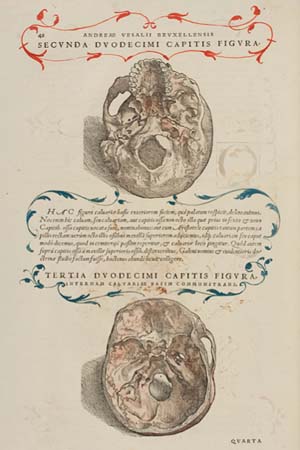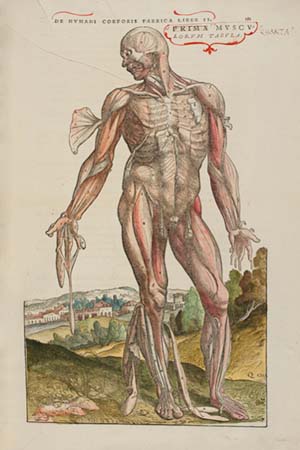
ndreas Vesalius’ De humani corporis fabrica is the most significant work in the development of modern medicine and anatomy. Vesalius’ “radical skepticism”, as he described it, led the young, headstrong anatomist to challenge the old ways and examine the human body with his own hands and eyes. His resulting anatomical tome propelled science into modernity.
Picture a young man fiercely passionate about his medical studies. Bright and fastidious, Vesalius attracted the notice of prominent professors and was incredibly skilled with his hands in both dissection and drawing. His obsession with hands-on research even drove him to rob graveyards at night to collect more human specimens for his dissections. Faithfully and eagerly, the ambitious Vesalius learned the lessons handed down to him by his teachers.
However, he soon became dissatisfied with repeating the old lessons, which were based on the dissection of animals rather than humans and were taken from the teachings of the ancient physician, Galen. Vesalius challenged his professors and the establishment by publishing this massive book, elaborate in its descriptions and intricate in its illustrations: De humani corporis fabrica or The Fabric of the Human Body.


